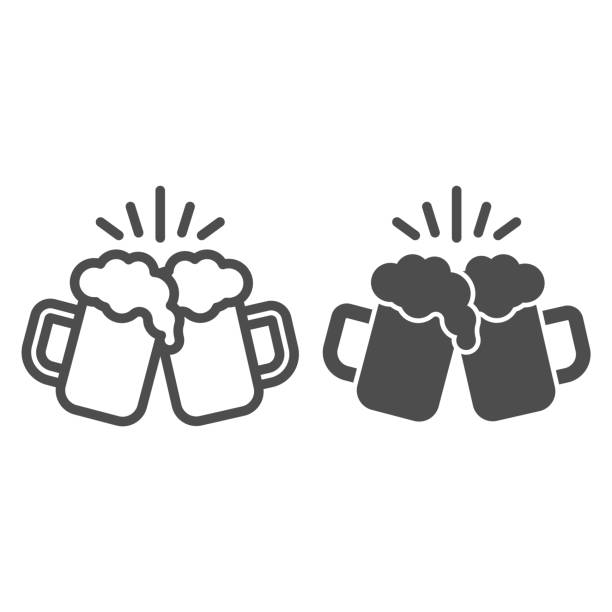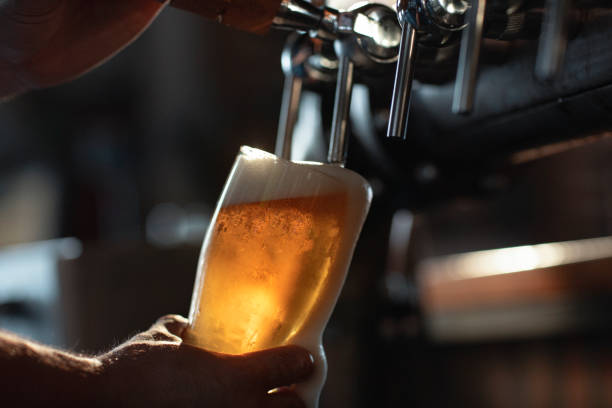This article will discuss the schooner standard drinks rate in Australia. In Australia, a schooner is a type of beer glass, not a specific drink. It’s the most common size for serving beer in most states, holding around 425 millilitres (15 imperial fluid ounces), which is three-quarters of an imperial pint. There’s a bit of variation though.
South Australia is the exception. They call a 425ml glass a “pint” and their “schooner” is smaller, at 285ml (the same size as a “pot” or “middy” in other states). Victoria and Western Australia also have their preferences for beer glass sizes.
While the schooner serves as a familiar standard drink size in Australia, it’s crucial to remember that any amount of alcohol can impair driving. To ensure road safety, prioritise designated drivers or public transportation after consuming any alcohol, regardless of the measurement. Our collective responsibility lies in keeping the roads safe.
Read on to learn more about schooner standard drinks in Australia.
Why Should You Not Drink and Drive?
Driving under the influence (DUI) is the overarching term for traffic offences related to drinking. It encompasses a range of severities depending on a driver’s blood alcohol content (BAC). The legal BAC limit in Australia to drive a regular-sized private vehicle with a standard full licence is 0.05 BAC.
However, it’s important to note that this is the general limit and there are stricter BAC restrictions for certain drivers:
- Learner, provisional, or probationary drivers: They must have a 0.00 BAC, meaning no alcohol in their system.
- Special licence holders: Drivers with specific licences, such as truck drivers, bus drivers, or those with a DUI conviction, may also have a 0.00 BAC limit.
Alcohol significantly slows down your ability to process information and react to situations on the road. This can lead to poor decision-making, delayed braking, and an inability to avoid obstacles. Moreover, it also disrupts the messages between your brain and muscles, making it difficult to steer smoothly, maintain control of the vehicle, and perform complex maneuvers.
Schooner Standard Drinks: Drinking Percentages
While knowing the size of a schooner or a typical wine glass is helpful, it’s more important to focus on standard drinks when tracking your alcohol consumption. This is because the actual alcohol content (shown as a percentage) can vary significantly between different beers, wines, and ciders.
Craft beers, ciders, and red wines are especially prone to having a higher alcohol concentration than average. Always check the label to know exactly what you’re drinking. Here’s a guide to standard drink content in some common drinks (remember, these are approximations and can vary slightly):
Beer:
- Pot/middy (285ml): Full-strength (1.1), Mid-strength (0.8), Low-strength (0.6)
- Schooner standard drinks measurement (425ml): Full-strength (1.6), Mid-strength (1.2), Low-strength (0.9)
Wine: (per 150ml glass typically served at a restaurant)
- Red wine (13.5%): 1.6 standard drinks
- White wine (11.5%): 1.4 standard drinks
Wine Bottles (750ml):
- Red wine (13.5%): 8.0 standard drinks
- White wine (12.5%): 7.5 standard drinks
By keeping track of schooner standard drinks and other drinks, you can make informed choices about your alcohol intake and stay within safe limits.
How Many Standard Drinks Can You Consume?
The National Health and Medical Research Council (NHMRC) recommends healthy adults consume no more than:
- 10 standard drinks per week: This is a total across the entire week, not a daily recommendation.

Why Is This Recommended?
While alcohol is legal and commonly consumed, exceeding these guidelines can lead to serious health problems. Sticking to these recommendations helps reduce the risk of:
- Liver disease: Excessive alcohol consumption is a leading cause of liver damage.
- Heart disease: Alcohol can raise blood pressure and increase your risk of heart attack and stroke.
- Cancer: Heavy drinking is linked to an increased risk of several cancers.
- Mental health issues: Alcohol can worsen symptoms of depression and anxiety.
- Accidents and injuries: Alcohol impairs judgment and coordination, increasing the risk of accidents and injuries.
Schooner Standard Drinks: Tips for Cutting Back on Alcohol Consumption
Even moderate drinking of schooner standard drinks can have negative effects, so some tips as per VicHealth to help you cut back:
- Find alternative ways to relax and unwind: Explore activities like exercise, hobbies, spending time with loved ones, reading, or meditation.
- Change your routine: Break the association between certain activities and alcohol. Try a walk after work instead of a drink, or swap your usual beverage for a non-alcoholic option like sparkling water with a twist of lime.
- Focus on the benefits: Remind yourself of the positive outcomes of reduced alcohol consumption. You might save money, improve your sleep, and gain more energy for activities you enjoy.

How Can We Help With Drinking Offences?
Drinking offences like drink driving can be costly. You could face fines, license suspension, and even a criminal record. This can affect your job, insurance, and travel plans. Legal help from JB Solicitors is crucial.
We can explain the charges, build a defence, negotiate penalties, and represent you in court. Their experience in traffic law can help you achieve the best outcome for your case. Don’t risk the consequences.
Contact JB Solicitors for a consultation about schooner standard drinks and other traffic law matters.
